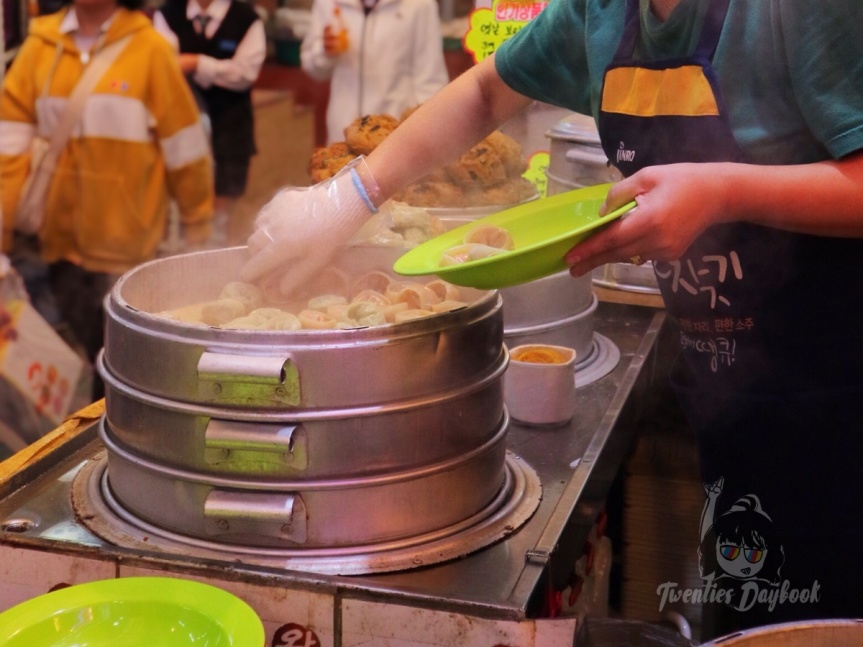This is not your ordinary must-try food or restaurant list. What I’m going to list here is derived from my own experiences—food I ate in Jeju, in different places and different circumstances. And even though some may seem like ordinary food items, they are actually special in the particular context I ate them in. You know, some food that seems regular can actually make a lasting impression on our palate because we associate them with a certain beautiful memory.
That’s why the title of this entry is “the best Jeju food experiences.” It’s not only the flavors that I’m recounting but also the memories I gained from them. Perhaps, you could also try eating these foods in the same way I experienced them. Or, concoct your own “memory flavor” with them!
Ramyeon with ddak and vegetables
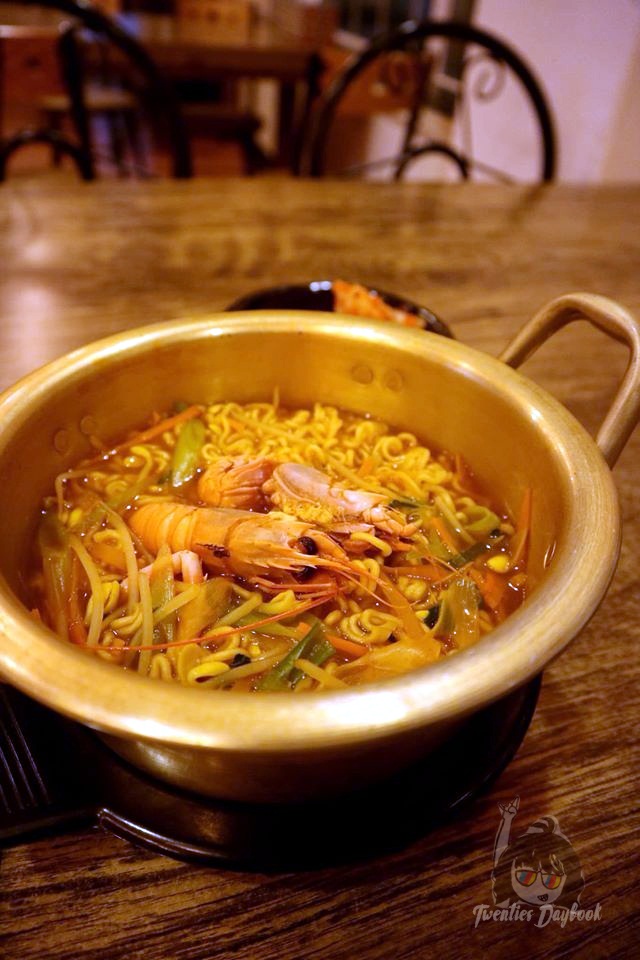
Before I came to South Korea, I was used to eating plain instant ramen. But Koreans apparently love adding different kinds of ingredients into their ramyeon, and even eat it with rice.
For my first dinner in Jeju, the sweet abeoji of Aewol Sea Palace Pension cooked ramyeon with vegetable slices and ddak (lobster) for me. What made it special was that he cooked it late at night for me, and he was quite sensitive to my needs. He immediately noticed that I didn’t know how to eat the lobster, grabbed plastic gloves, and peeled some of them for me.
Where I ate it: Aewol Sea Palace Pension. It is a guesthouse in Yeondae Village, Aewol, but they have a restaurant area in the lobby. If you’re not a guest, perhaps you can still come in for a meal.
Freshly steamed or fried mandu
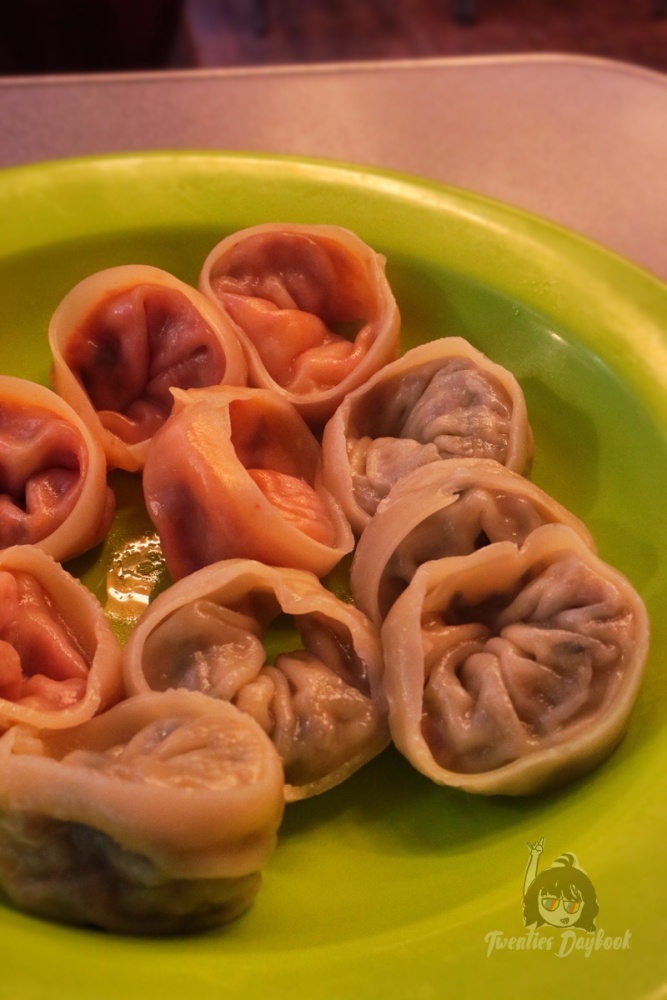
There are so many kinds of food to try at Dongmun Market, and it’s a whole gastronomic adventure! But personally, the dumplings at this particular stall is my favorite (not that I got to try many others). A sweet woman looks after the shop by herself. Although she obviously had cooked mandu piled up on the side, she still took new ones from the cooker so my mandu was served steaming. I also like the warm and cozy ambiance of her little dining space.
Where I ate it: Dongmun Market. I don’t know the business name of the stall because the banner above it only advertises delicious octopus ramyeon in big font. But it can be accessed from Dongmun Market Gate 2 on Dongmun-ro, and it is right across Donggwang Store.
Kimbap at the top of Hallasan
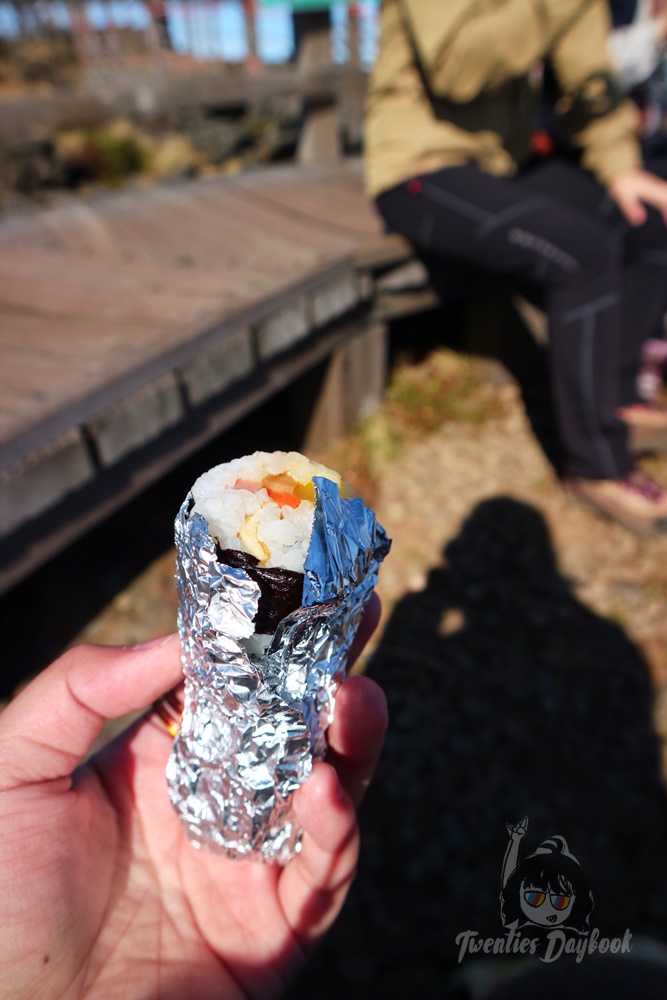
Kimbap is so ubiquitous and cheap in Korea that it seems to be often overlooked. But regardless of the occasion, it’s one of my favorite Korean dishes (along with bibimbap and jjajangmyeon). What I love about it is that it is easy to make, easy to pack, and easy to eat! You get rice, meat, and vegetables in one roll, and you don’t even need utensils to eat it. It’s a perfect hiker’s food.
Kimbap at the top of South Korea’s highest peak is a whole new level. I bought it for only 2,000 KRW at a restaurant outside of the Gwaneumsa trail entrance and saved it for lunch. It was so much more delicious and (ful)filling after a successful hike to Hallasan’s summit.
Where I ate it: Hallasan. But I bought it from Gwaneumsa Restaurant, right across the parking lot of Gwaneumsa Trail.
Instant ramyeon + iced coffee
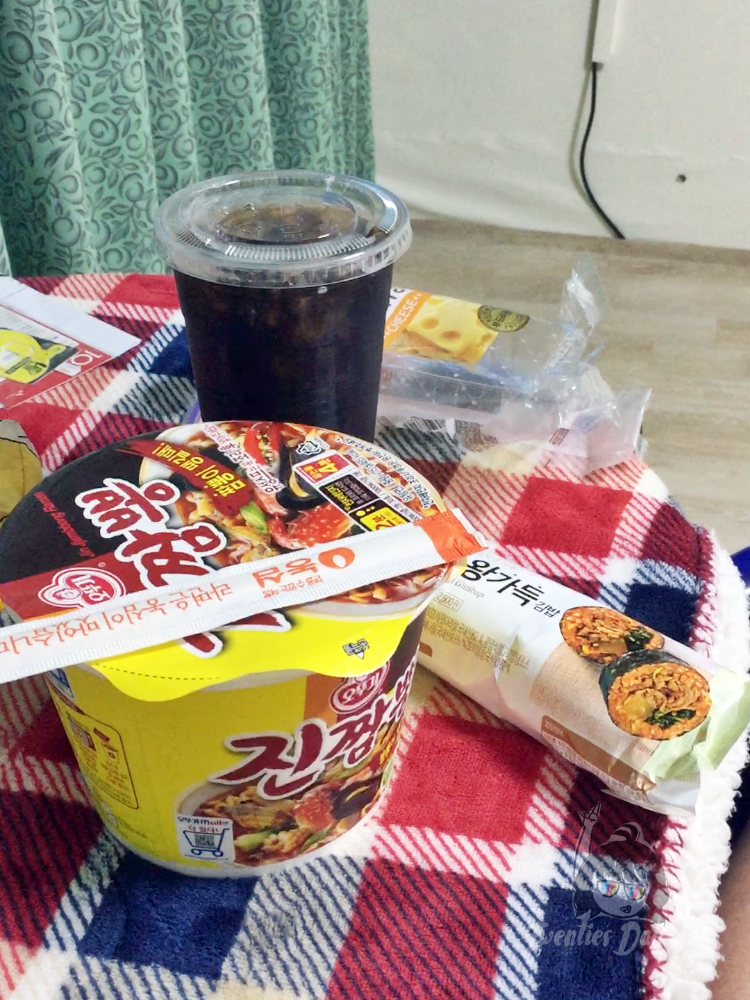
Not so new and wild, is it? But it still deserves a mention on my personal list of Jeju food experiences. I can easily cook cup ramen at home here in the Philippines, but instant ramyeon bought from a convenience store in Jeju—or anywhere in South Korea, for that matter—tastes different. Also, there are a lot of ready-to-eat food items you can find at a Korean convenience store that you can mix and match with instant ramyeon. And a microwave, hot water, and ice cubes are at your disposal at the store.
Another thing I love about Korean convenience stores is the variety of coffee selections. 7-Eleven, Family Mart and others in the Philippines have limited and boring coffee shelves. My current favorite is iced Delaffe Hazelnut Americano.
A particularly memorable instant ramyeon + iced coffee experience was after my hike at Hallasan, when I was so cold and tired (yet happy). My body was aching, and a post-hike dinner of ramyeon and coffee in my hotel room was relieving.
Where I ate it: In the warmth of my room at Aewol Sea Palace Pension. I bought the food from the nearby CU convenience store.
Hoedeopbap (sashimi rice bowl)
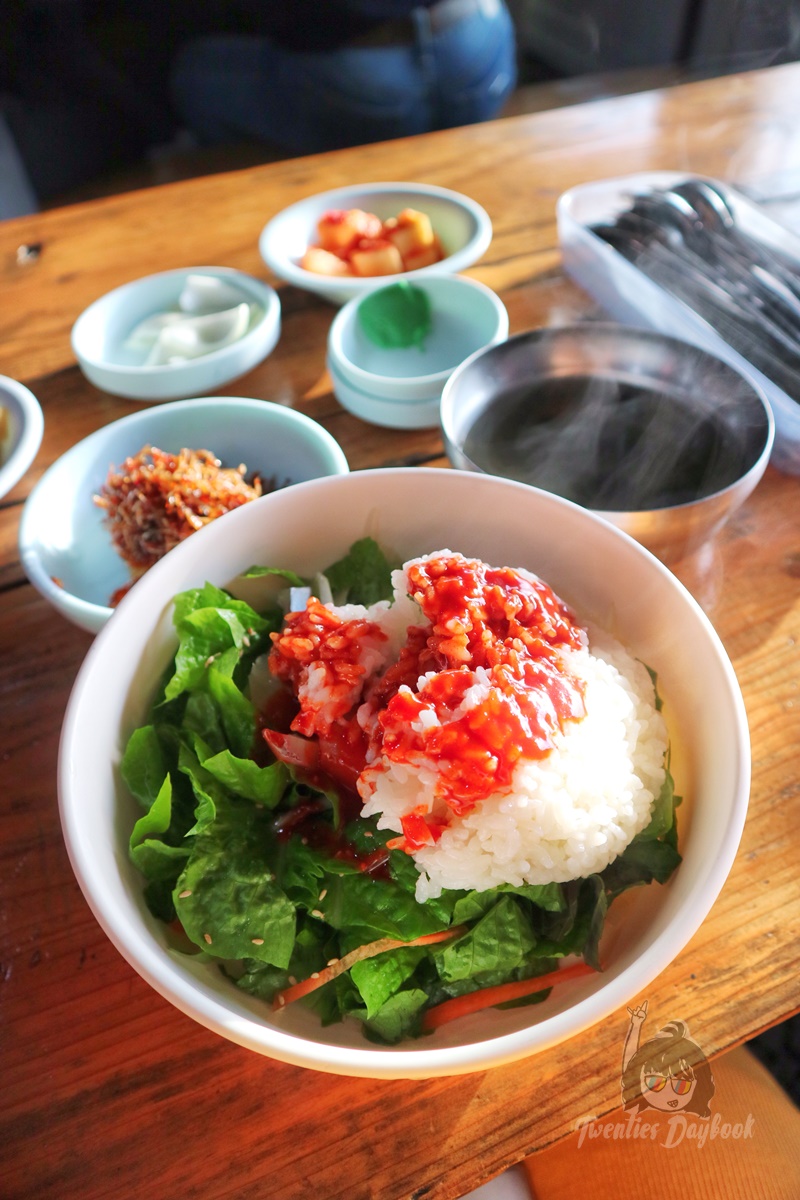
Now, we get to the exciting part. I’ve said I also love bibimbap, and the usual bibimbap is made with fried egg and vegetables. It’s the first time I tried hoedeopbap (회덮밥), which is a version of bibimbap made with sashimi. The eatery, which sits by the ocean, is modest and unfussy. The ajussi that took my order came across as sour at first, but he took the time to try and explain to me how to eat the hoedeopbap though I did not ask. He’s like a grandpa that often scorns at you but will always prepare your milk at bedtime.
Where I ate it: Dongbok-Ri Haenyeo-Chon in Gujwa-eup. It’s a few minutes by walk from BTS Suga’s brother’s Gongbech Cafe.
Modeum gukbap (assorted pork innards soup)
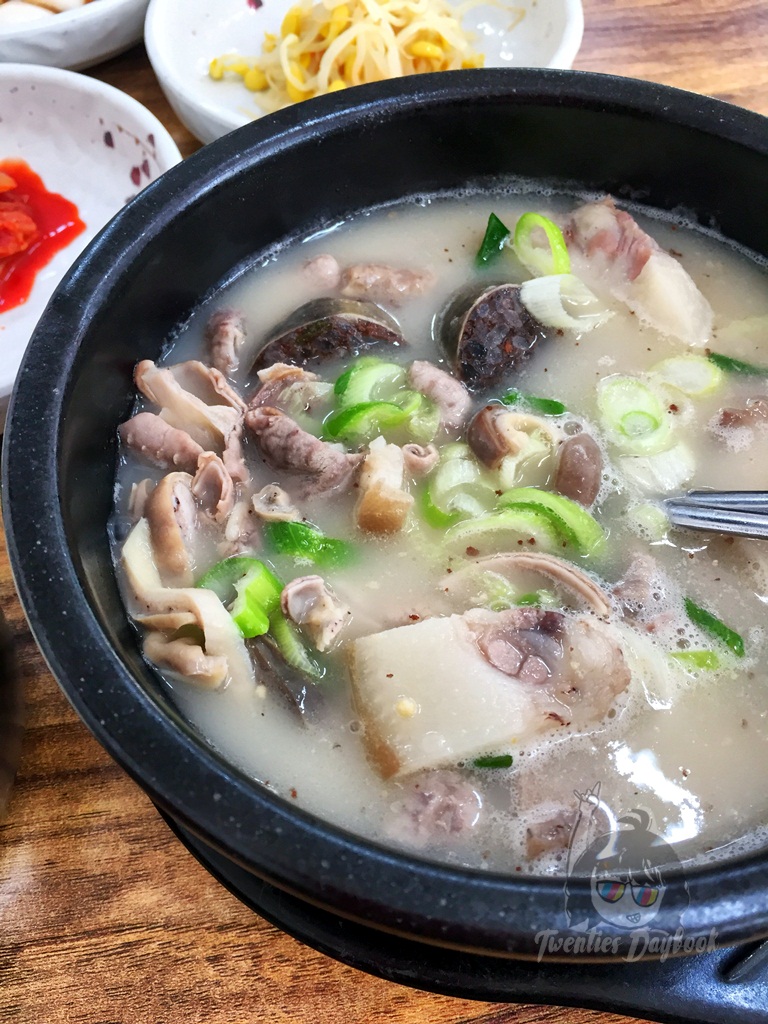
The problem sometimes with communicating over a language barrier at a restaurant is that you’ll sometimes get what you’re not expecting. Such is what happened that led me to eating a pork innards soup, which was not even on the bottom of my food list—it wasn’t on it at all. But that’s not to say I regret eating modeum gukbap.
It is the specialty of this small eatery on Chilsimni Food Street—the only food that had a picture on the menu board, which was also why I thoughtlessly agreed to have it. Panic immediately boiled within me once the soup was served. The curly, fluffy things of horror that are pork intestines caught my eyes. Then, as I mixed the soup, I unearthed ominously dark blood sausage.
The main reason I dislike pork innards is that they are repulsively smelly. But ajumma’s gukbap had none of that! All the internal panic was totally unnecessary. I enjoyed the soup down to the last scoop. It’s as comforting as a chicken soup on a rainy day.
Where I ate it: Hyeonine Gukbap on Chilsimni Food Street, Seogwipo.
Overload of seafood noodle soup
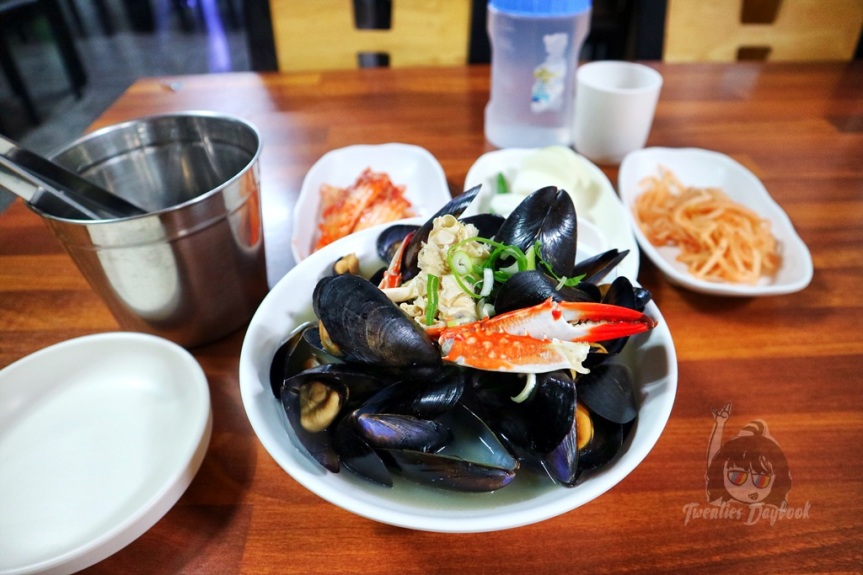
Here’s another silly story. I’m not a fan of seafood but I don’t avoid it either. Since I was in Jeju, a great source of fresh seafood, I made sure to try them out here and there. So when I went to Soldongsan Gogi Guksu, despite the name indicating meat soup (gogi guksu) is its specialty, I still ordered the sole seafood dish on the menu.
A bowl overfilled with mussels was served, and I was surprised. But as I learned from my previous experience at Hyeonine Gukbap, I held back my panic and took a sip of the soup. The scent of the mussels was heavy, but the soup itself was light and tasty. I appreciate their extreme generosity with the mussels, but I couldn’t finish them all because my head was starting to hurt from the seafood overdose!
Where I ate it: Soldongsan Gogi Guksu on Chilsimni Food Street, Seogwipo.
Korean-style baked spaghetti
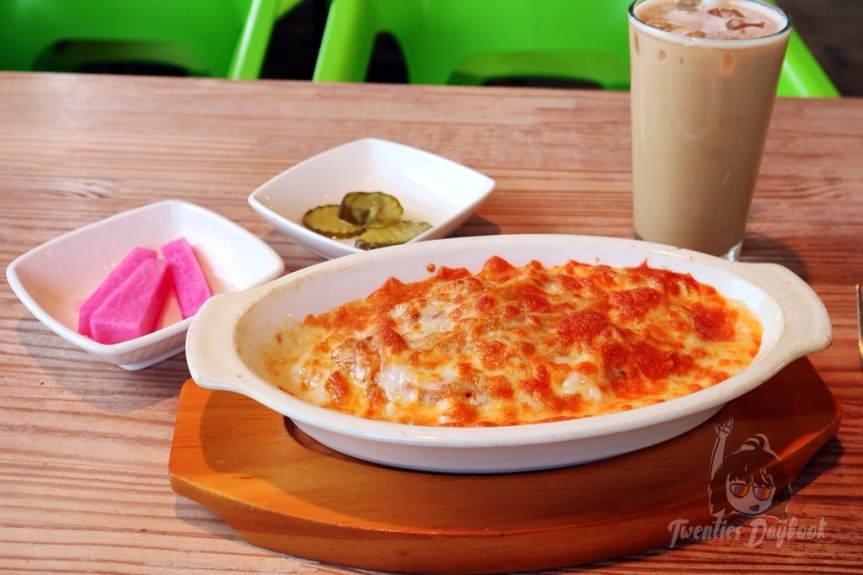
After a few days of seafood and unusual dishes, I craved for something more familiar. That’s why I was happy to eat baked spaghetti with iced coffee at a modest beach cafe near Songaksan. It’s still not your usual spaghetti, though. Instead of the usual garlic bread, it was served with Korean side dishes like pickles and pickled radish!
Also, I was happy to provide the Ten Pizza ajumma some quiet company for a while. I was her only customer at the time. If you ever go to Songaksan, please dine here! It’s only a short walk away from the main commercial strip of Songaksan.
Where I ate it: Ten Pizza at Songaksan.
Jeju oranges at Songaksan
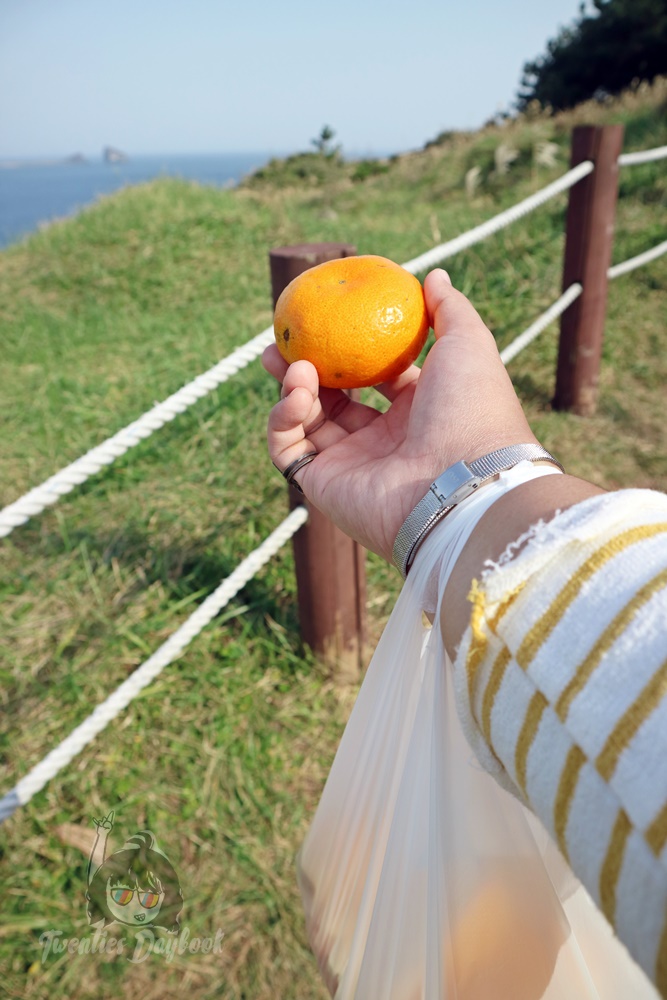
There are many orange fruit vendors at the base of Songaksan, so I decided to buy some so I can nibble on something while sightseeing. I’ve forgotten how I ended up with ten oranges but yes, I bought ten of them. That’s some vitamin C for you. Some of them were a little overripe but nonetheless delicious and sweet. It’s the perfect snack because it’s as natural and health-giving as the views around Songaksan.
Where I ate it: Songaksan.
Hot coffee with a footbath
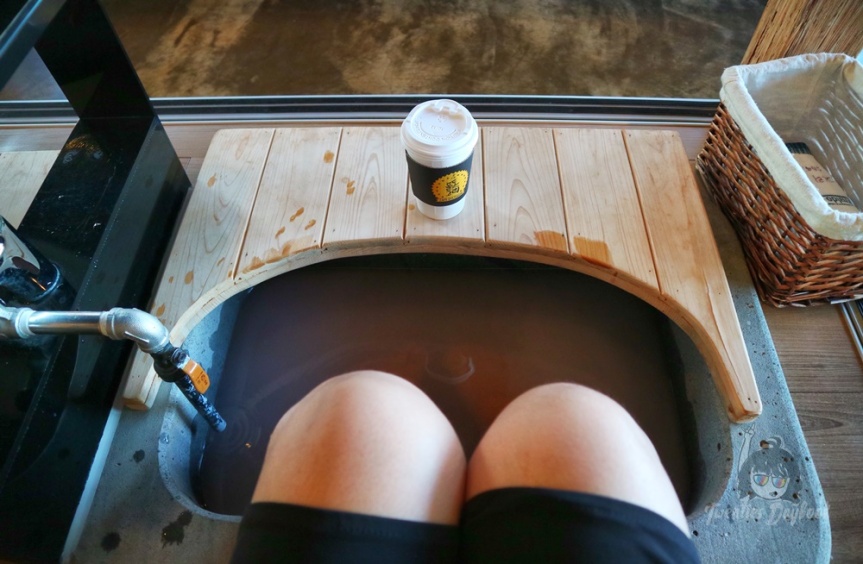
I have coffee anywhere and everywhere. I’ve been to gaming cafes and pet cafes, but this is the first time I’ve had a footbath with my coffee. Footbath cafes are common in South Korea; unfortunately, I have not seen this concept in the Philippines. Basically, you enjoy your coffee while your feet are soaked in hot water mixed with your chosen aroma powder. I think mine was sakura. At Doltogori Foot Bath Cafe, you even get views of the harbor in front, and the footbath area is on the second floor. The neighborhood is also very peaceful.
Where I ate it: Doltogori Foot Bath Cafe, just a short walk from Jeju Folk Village. It’s located in a quaint beachside neighborhood near Pyoseon Beach.
Bingsu at 10ºC
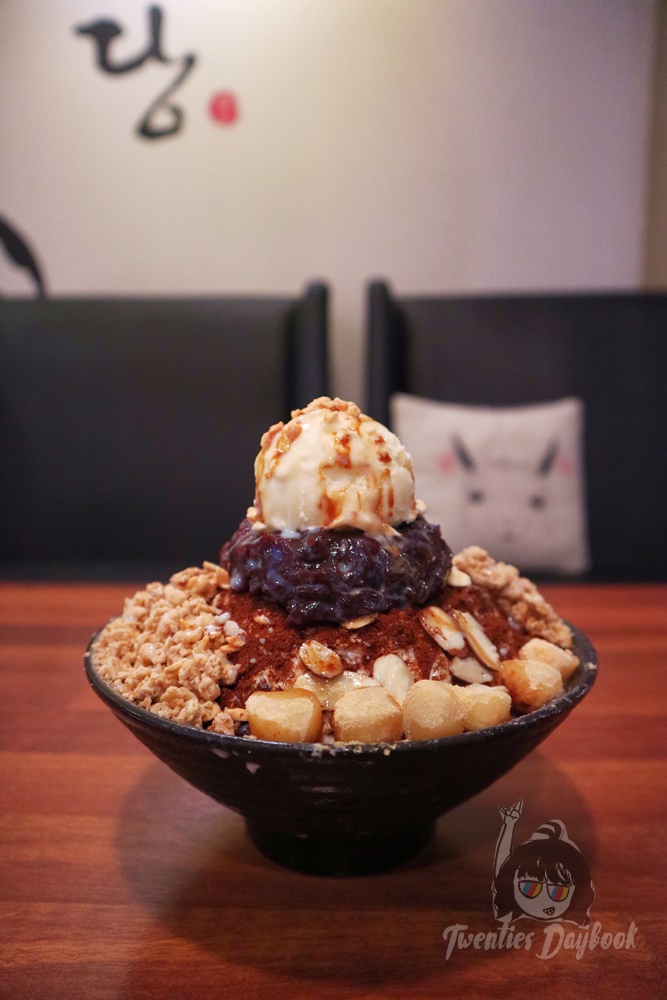
It was in the evening, and it definitely felt colder with the wind outside. However, bingsu (shaved ice dessert) is my favorite Korean dessert and I couldn’t pass up on it when I saw a bingsu cafe near my hotel. Plus, I was getting depressed because it was my final night in Jeju and the next day was my flight home. So, I allowed myself to indulge in a huge bowl of coffee bingsu with sweet and chewy injeolmi (rice cake). It was warm inside the cafe so I didn’t freeze over, luckily.
Where I ate it: Jeju Seolsimdang / Jeju Dessert Cafe in Yongdamsam-dong, downtown Jeju.
Meanwhile, these are my favorite coffee shops in Jeju.


